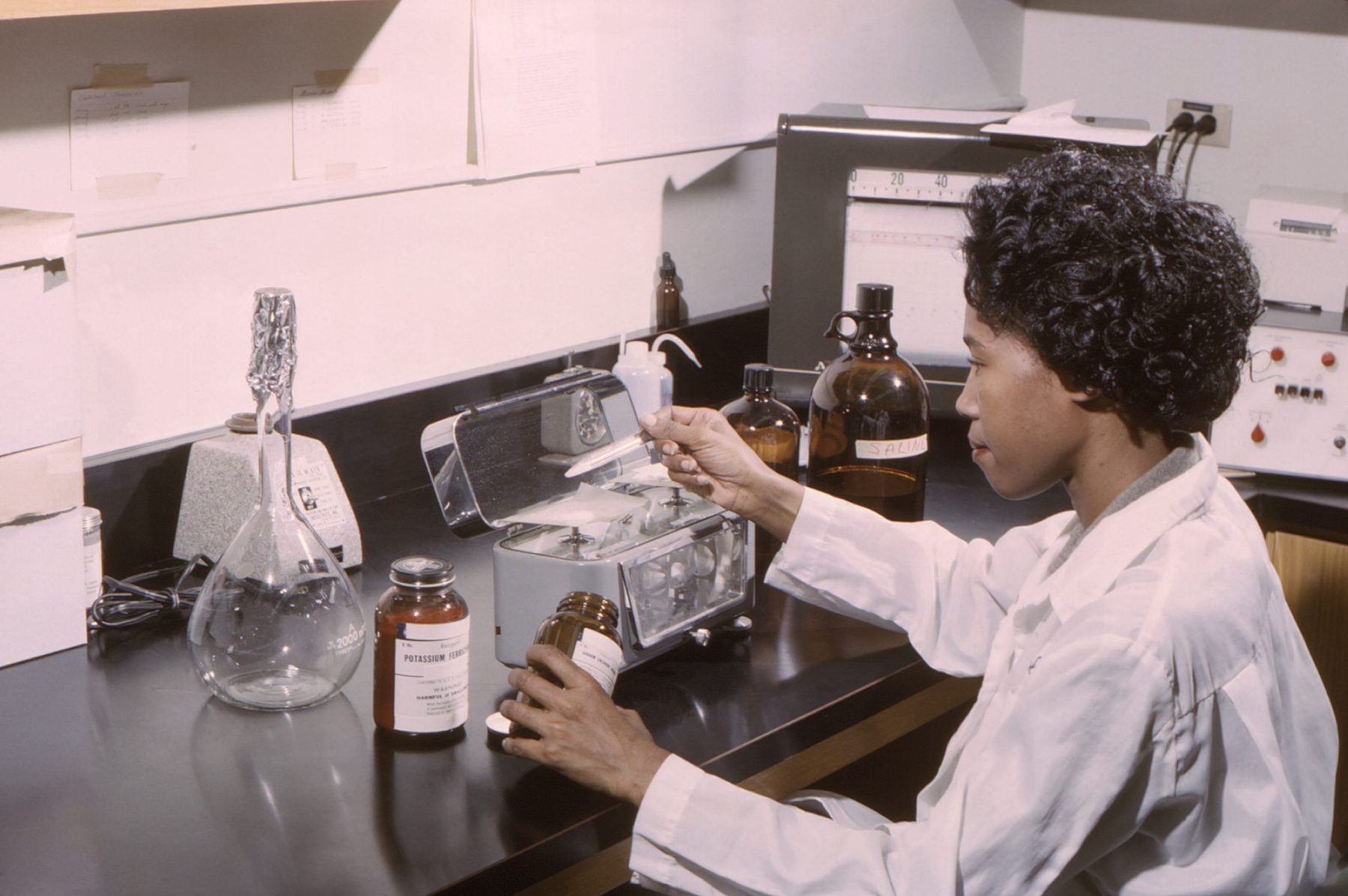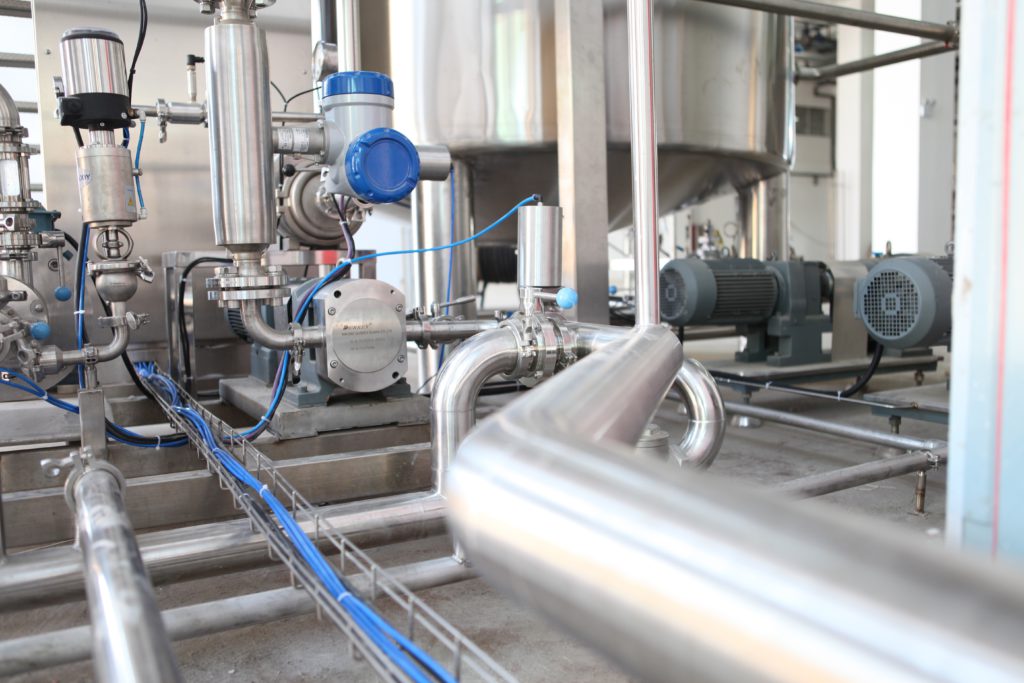Reactions occur when two reactant molecules effectively collide, each having minimum energy and correct orientation. Reactant concentration, the physical state of the reactants, and surface area, temperature, and the presence of a catalyst are the main factors that affect the reaction rate.
Aluminium Chloride and Sodium Hydroxide Example
The best way to show the factors affecting a chemical reaction is to use an example. The chemical reaction we will look at is the double displacement reaction between Aluminium Chloride (AlCl3) and Sodium Hydroxide (NaOH) that produces Aluminium Hydroxide (Al(OH)3) and Sodium Chloride (NaCl) (equation 1).
AlCl3(aq) + 3NaOH(aq) → Al(OH)3(s) + 3NaCl(aq)
Equation 1: Double displacement reaction between Aluminium Chloride and Sodium Hydroxide
Factors Affecting The Rate Of A Chemical Reaction:
Concentration
The concentration of reactants in a chemical reaction is related to the rate of a chemical reaction. If we increase reactant concentration, then the rate of the reaction will also increase. The rate of the reaction is dependent on the concentration of both the reactants. Because the AlCl3 solution is a strong electrolyte, it dissociates completely into two ions, Al3+ and Cl–. Therefore, it means that AlCl3 and Al3+ ions are present in aqueous solution. In this reaction, AlCl3 is the limiting reagent, as the rate of the reaction is dependent on it.
While sodium hydroxide solution is not an electrolyte, but it dissociates into Na+ and OH– ions. Thus, NaOH and OH–ions are present in aqueous solution. In this reaction, NaOH is the limiting reagent, in terms of concentration. This is because the rate of the reaction is dependent on it. So, this reaction is an equilibrium reaction, as it depends on the product.
The pH of the reaction must be in the range required by the reaction. If it is outside this range, then the reaction will be slow. For instance, in the case of the reaction between AlCl3 and NaOH, the concentration of both the reactants are equal. However, in this case, the highest concentration of the product is achieved when the reaction is carried out at pH 3, and the highest concentration of the reactant is at pH 9. So, the reaction requires the pH to be in the range of 3-9.
Physical State
The physical state of the reactants affects the rate of a chemical reaction. For instance, in the case of the reaction between AlCl3 and NaOH, if both the reactants are in the gaseous state, then it will be difficult to achieve the equilibrium. This is because gaseous reactants move away from each other, and the distance between them has a bearing on the diffusion rate. Moreover, in the gaseous state, the molecules have high kinetic energy, which slows down the rate of reaction.
While if both the reactants are in the solid-state, then it is easier to reach the equilibrium, in this case. Solid reactants do not have great kinetic energy. Moreover, in the solid-state, the molecules are close to each other, so it is easier to achieve equilibrium.
If either of the reactants is in a liquid state, then it is easy to achieve the equilibrium in the liquid state also. But, if both the reactants are in the liquid state, then it will be easier to achieve equilibrium again, as the molecules are closer to each other. Thus, the liquid state is always favourable for a reaction, the reason being that it ensures a greater number of collisions. On the other hand, free gas is less reactive as compared to a gas dissolved in a solution.
Catalyst
The presence of a catalyst has an impact on the rate of the reaction. For instance, in the case of a reaction between hydrogen and oxygen, a catalyst is not required. This is because neither reaction is extremely fast, nor reactive. However, if we want a faster and more productive reaction, we can use the catalyst in this case, as well. The catalyst’s role, in this case, is to speed up the rate of reaction. But this also depends on the type of catalyst used. For instance, different catalysts react differently under different conditions.
Temperature
The temperature of the reaction has a big impact on the rate of the chemical reaction. If we increase the temperature of the reaction, hence the temperature of both the reactants, then the reaction rate will increase. Hence, the rate of chemical reactions increases with temperature.
In the reaction between AlCl3 and NaOH, if the temperature of the two reactants is doubled, then the rate of reaction, hence production will also increase. For instance, if we carry out the reaction at a temperature of 98°C, then the rate of reaction will increase by a factor of four, as the rate of reaction doubles with every 10° rise in temperature.
Surface Area
The surface area of both the reactants has a significant impact on the rate of reaction. It is because the surface area of reactants has a direct relation with the number of collisions per unit time. Therefore, if we want to increase the rate of a chemical reaction, then we must increase the surface area of both the reactants.
In the case of a reaction between AlCl3 and NaOH, there is no significant change in the reaction rate, whether the number of reactants is increased or the reactants change in shape or size. However, if we increase the surface area of a reactant, then the reaction rate also increases. For instance, if AlCl3 and NaOH are powdered, then the reaction rate will decrease by a factor of two, as only a small number of ions come in contact with each other. So, we can state that the rate of reaction is dependent on the surface area of the reactants. The maximum size of reactant particles in which a chemical reaction takes place at the maximum rate is called the critical size.
Thus, in the case of the reaction between AlCl3 and NaOH, both these reactants are powdered, hence the change in the rate of reaction is not significant. Therefore, due to the powdered nature of the reactants, the reaction rate is dependent on the size of the reactants. As a result, the reactants keep on colliding with each other, in case of powdered reactants. Hence, the rate of the reaction is higher in this scenario.

Dr. Adam Zaidi, PhD, is a researcher at The University of Manchester (UK). His doctoral research focuses on reducing carbon dioxide emissions in hydrogen production processes. Adam’s expertise includes process scale-up and material development.’



